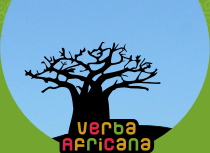Ewe in Ghana
According to oral narratives of migration (usually defined as xotutu), the Ewe moved westward from northern areas in present-day Benin and settled, after successive displacements and subdivisions, in what is nowadays Togo and eastern Ghana. Lawrence (2005) gives a map of contemporary Ewe settlements spanning from the banks of the Mono River on the Togo-Benin borders to Ghana, where large Ewe communities live along the eastern side of Lake Volta and in the area around Keta Lagoon on the sea-coast (see also the map included in the present volume). Oral sources and archaeological remains suggest that a series of migrations started in the 11th century and that the present Ewe settled in Ghana in the early 17th century; the massive Ewe exodus was probably caused by the progressive expansion of other populations, probably the Yoruba (Amenumey 1997: 15-16; Gayibor and Aguigah 2005: 6-7). Through genealogies of royal characters, narratives of migrations collected at Tado (along the Mono River) relate that Adja and Ewe peoples came from Ketu in Yoruba country, while narratives collected at Notsie (central Togo) recount a second flow of migration from Tado to Notsie. A most frequently narrated story of origin locates the Ewe ancestral home in Notsie, and the departure from this town is enacted in the Hogbetsotso (“leaving Hogbe”, ie. leaving the ancestral land) festival that takes place in several Anlo-Ewe (Aŋlɔ in Ewe orthography) towns such as Anloga, Anyako, Dzodze and Klikor in Ghana (Nukunya 1997: 106). The Ghanaian priest Henry Kwakume (1951) offered one of the first collected versions of the migration from Notsie.
Several xotutu versions agree that the Ewe suffered in Notsie under the reign of Agokoli I. This cruel king assigned difficult tasks to the Ewe people, who had to build houses and the city wall with mud and pieces of glass, rock and thorns, and severely punished those who did not obey him. The Ewe were finally able to escape thanks to a cunning plan. The women —while washing— would throw water against one single spot of the city wall so that the wall would become softer and it would be possible to cut a hole in it. Women, children and older people escaped through the hole, while the younger men and drummers followed later on walking backwards so that nobody could see from their footsteps that they were leaving. Other episodes narrate incidents that took place after the Ewe departed from Notsie. All these narratives of migration give form to and convey knowledge of the Ewe land and community, crystallizing long-term historical processes of identification through migrations, settlements and interactions with different groups.
The Anlo-Ewe on the Ghanaian coast exported fish and salt to the interior. During the Slave Trade, their towns also served as slave markets for the captives sent for sale by the inland kingdoms. They were repeatedly involved in trade conflicts with neighbours, sometimes including other Ewe towns. After 1780, the Anlo-Ewe suffered from European expansionism and colonization. At first, there were hostilities and battles against the Danes who intended to impose Danish commercial control on the coastal area, taking advantage of the British-Dutch war and the weakening of the Dutch position in the area (Amenumey 1997: 19). With the abolition of the Slave Trade, the economy of the Ghanaian coast changed, and exports of palm oil and cocoa were added to those of fish and salt. At the end of the 19th century, there were uprisings against the British and the Germans who had established their control in the areas of present-day Ghana and Togo. The European presence affected political and social structures of Ewe villages and confederations and led to extensive Christian missionary activity that established centres at Peky, Waya and Ho. International events affected the Ewe, such as when the French occupied German Togoland in concomitance with the declaration of the First World War in 1914. The former German colony was assigned to French and British mandates, which resulted in the division of Ewe-speaking areas along colonial borders and languages. The division was definitively sanctioned when Ghana acquired independence in 1957 followed by Togo and Benin in 1960, but continuity existed and still exists across the state borders. Today the Ewe in Ghana are spread over the administrative districts of Anlo, Ketu, Akatsi and Tongu.

